
We started our gardening journey fourteen years ago, growing all of our vegetables and fruits in pots on our tiny city lot. Then we moved to a large homestead and were lucky to have a giant vegetable garden, but then… we moved again, and now we’re back to growing in pots until we have time to build some raised beds on our rocky soil.
I’ve successfully grown bushels of tomatoes in pots, but this victory came after making a whole lot of mistakes over the years.
Growing tomatoes in pots is very different from growing them in the ground. I’m here to share the big list of mistakes I made growing tomatoes in containers, so hopefully, you can avoid them.
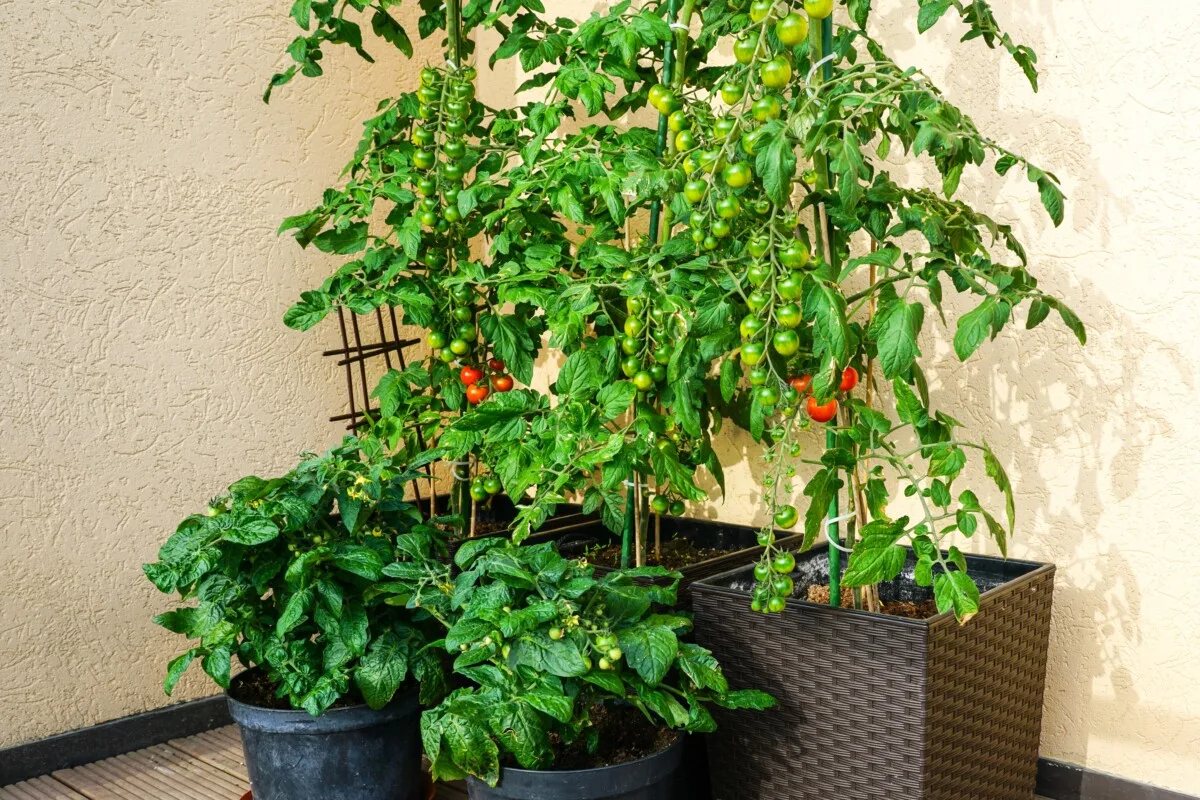
Mistake #1: Not understanding water needs
When it comes to growing tomatoes in containers vs in the ground, one of the biggest differences is their water needs. When I first started container gardening, I fundamentally didn’t understand that this difference was so important. I lost a lot of potted plants to over and under-watering before I really got the hang of things.
Not enough water
Tomatoes in containers need more water than tomatoes grown in the ground. This is because tomatoes growing in the ground can dig their roots deeper and wider in search of water during dry times, whereas tomatoes in pots only have the soil within the confines of the pot.
It’s up to you to provide them with enough water for the plants to thrive.
This can mean you’re watering your tomatoes twice a day or more in very hot, dry weather.
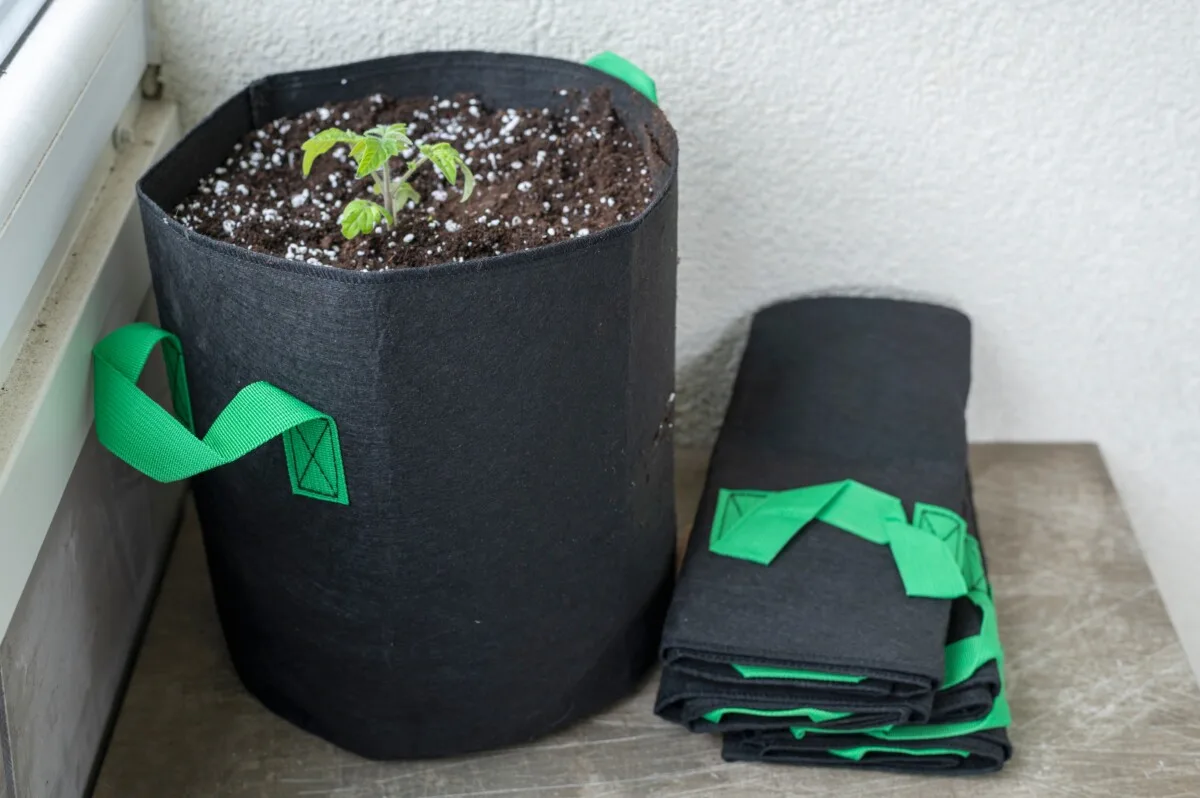
If you live in a dry, arid climate, it’s also helpful to use self-watering pots for your tomatoes. These pots have a reservoir in the bottom that saves water and gives it back to the soil when the soil is dry.
However, self-watering pots may not be the best way to go if you live somewhere with lots of rain in the summer, which leads me to the next mistake.
Too much water
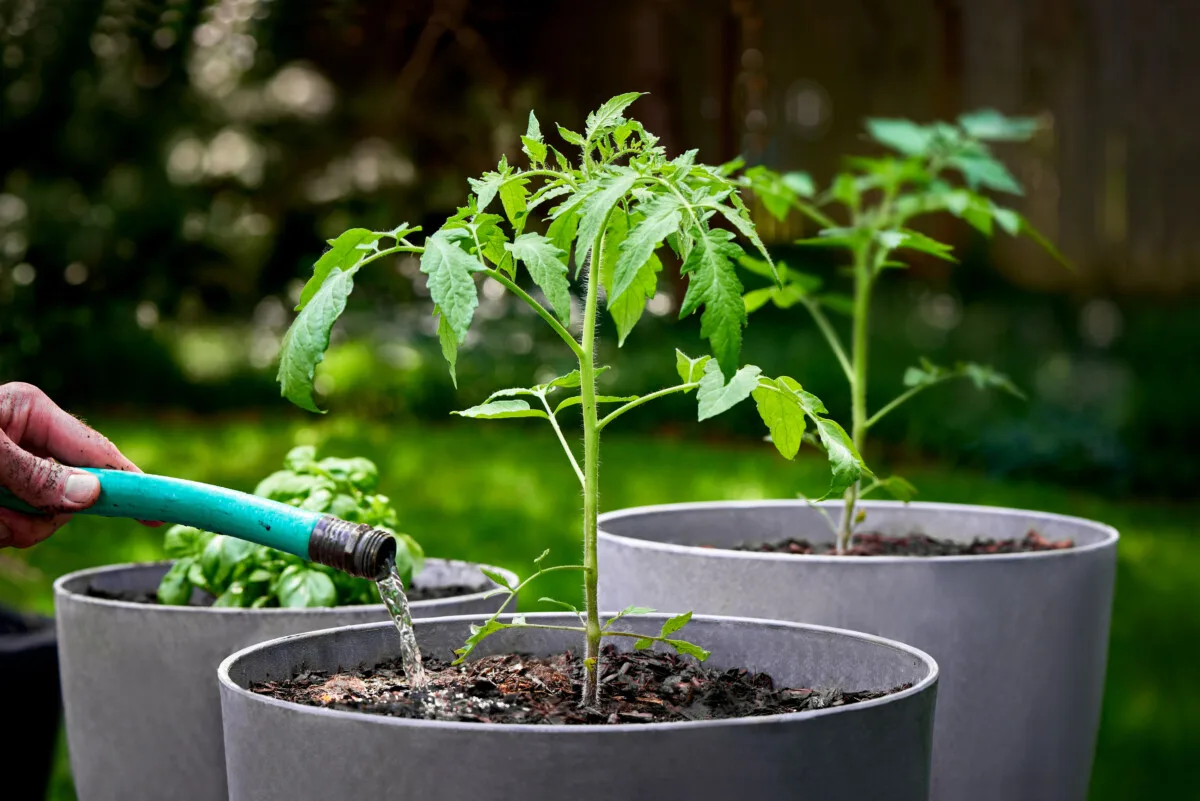
It’s just as easy to give your tomatoes too much water as it is to not give them enough.
This can happen if you’re using self-watering containers, as they don’t drain excess water out of the bottom. When you get several days of heavy rains, it’s easy for that soil to get soggy and your plants to drown.
Pay attention to your climate; if you live in an area with lots of rainfall or you tend to water frequently, you don’t need self-watering pots. Let the tomatoes drain completely.
If you live in a very dry climate, self-watering pots are a great idea, but make sure you still dump out the excess water if the soil is soggy for several days in a row so the roots aren’t sitting in water.
A moisture meter is handy if you’re going to grow tomatoes in containers. your soil. These tools are inexpensive and easy to use, and you don’t need to question whether or not it’s time for water.
Mistake #2: Overcrowded containers
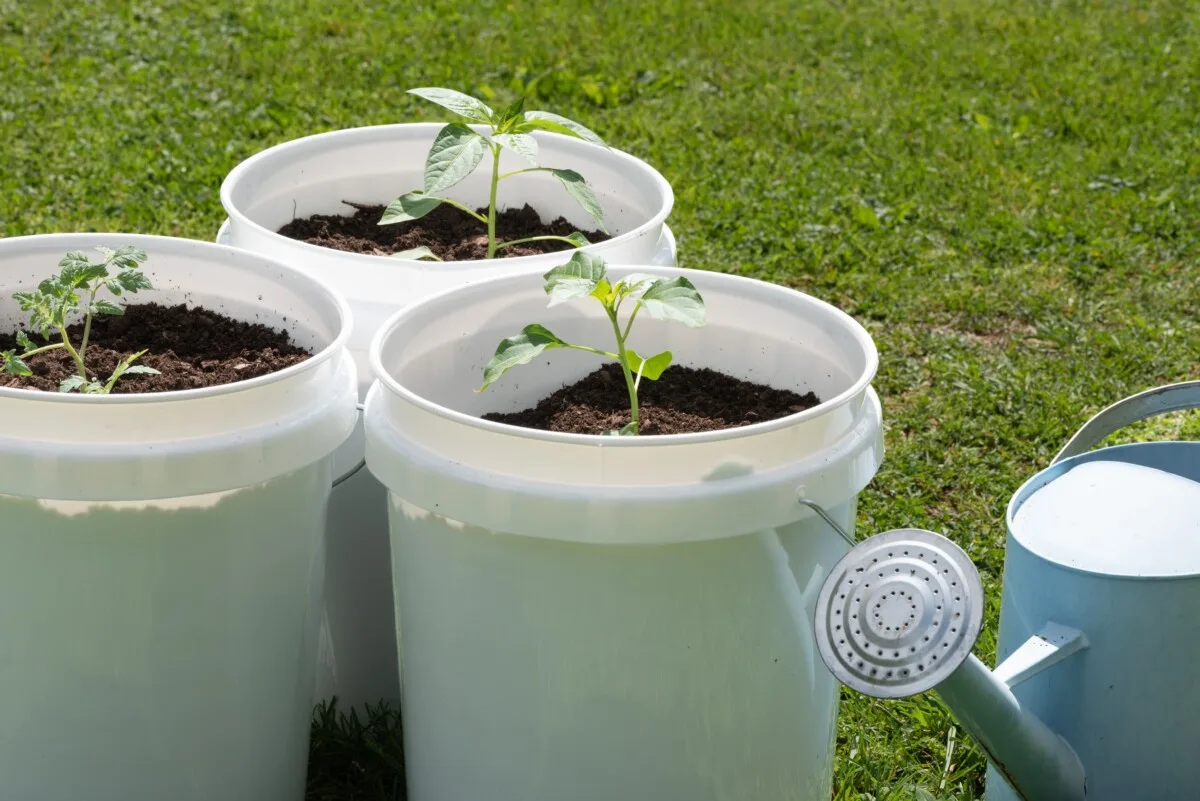
I tried for years to grow tomatoes in too-small pots before I realized I was making this mistake. My plants grew fine at first, but then they became weak, their leaves turned yellow, and the plants died. A few of them produced a few sad tomatoes, but overall, not ideal.
I realized that tomatoes need pots that are much bigger than you would think.
Tomatoes need lots of space; they grow massive root systems to support fruit production. The more soil you can provide, the better. This ensures they always have the nutrients and water they need to thrive. When growing in the ground, it’s usually no problem; tomatoes can spread out as far as they need. In containers, they’re at the mercy of their pot size, so you want to go as big as you can.
I’d suggest one 5-gallon pot per tomato plant (or larger), no matter what type of tomato you’re growing.
Mistake #3: Not using a trellis
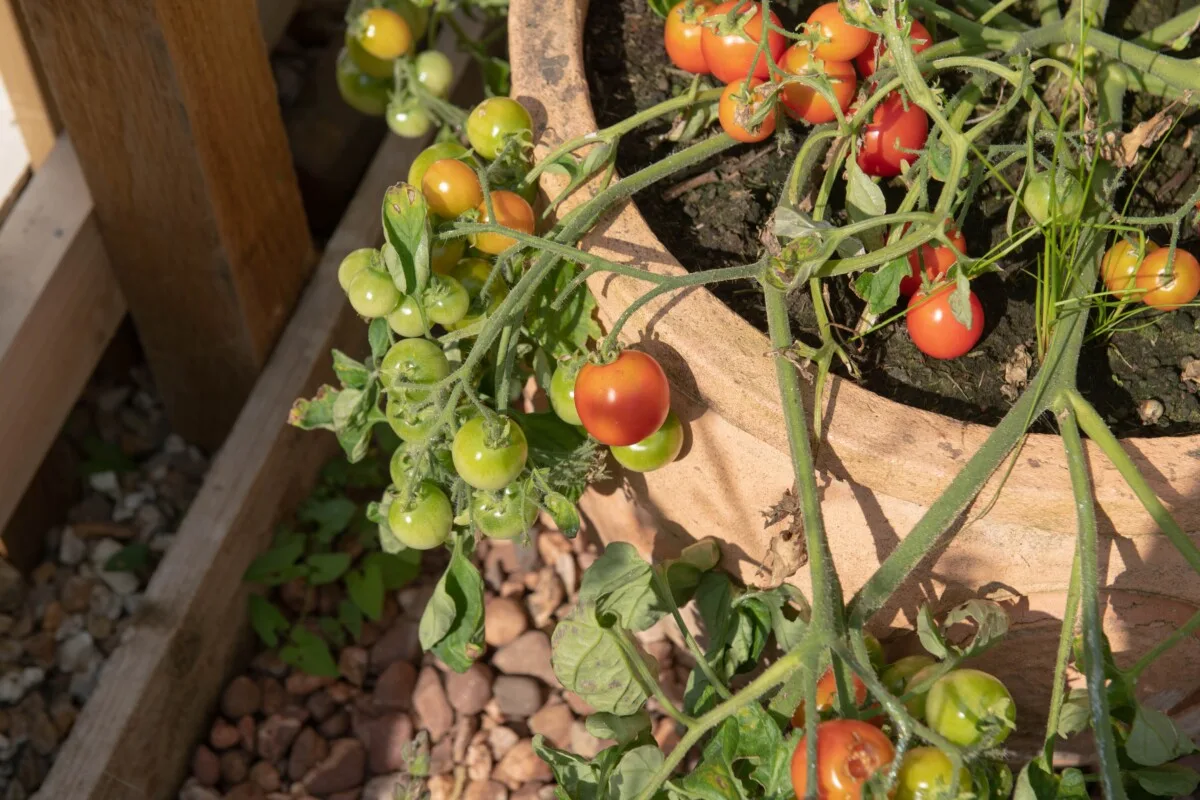
Trellising tomatoes is a must, even when growing tomatoes in pots.
Most tomato plants grow to be very tall, and even the ones that stay short tend to get so heavy with fruit that they fall over anyway.
Trellising tomatoes in containers can be a challenge, but it’s not impossible.
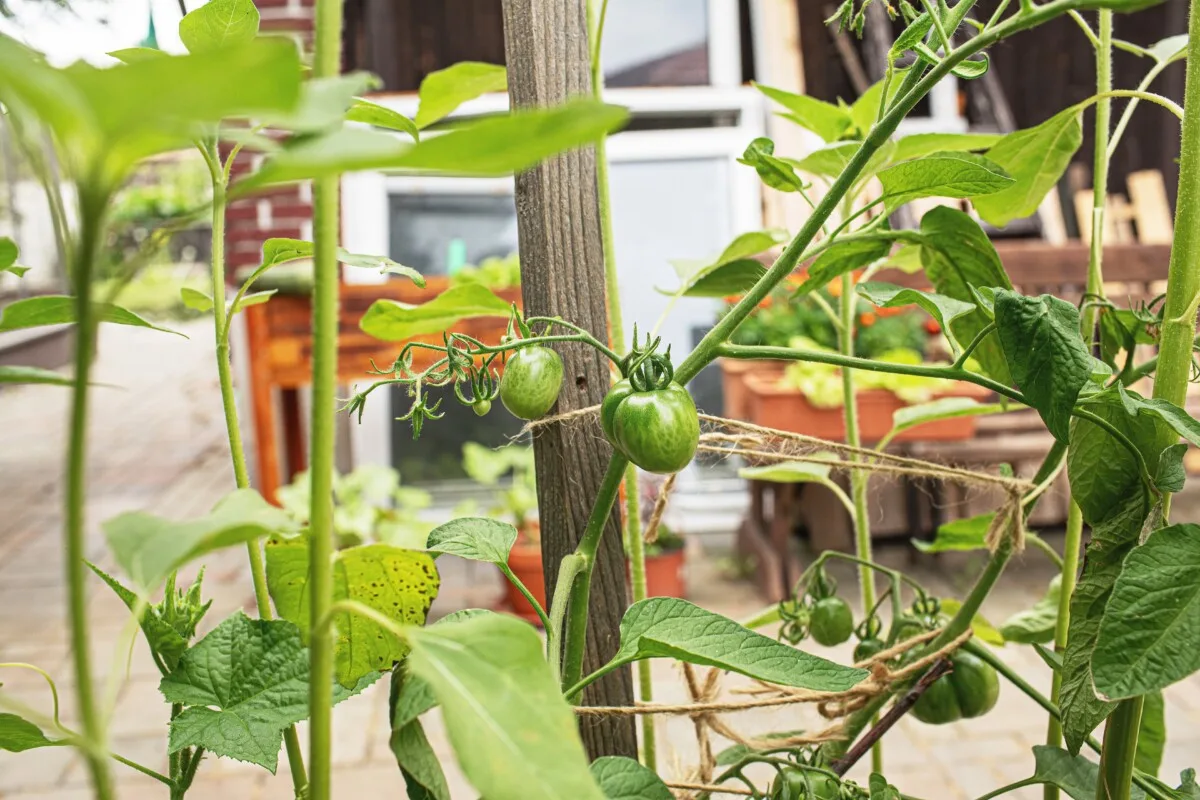
In fact, in our case, it was easier to trellis our potted plants. We placed them up against the rails of our deck and used soft cloth scraps to tie them right to the deck rails. You can also use tomato cages in pots, provided the pots are big enough to hold them.
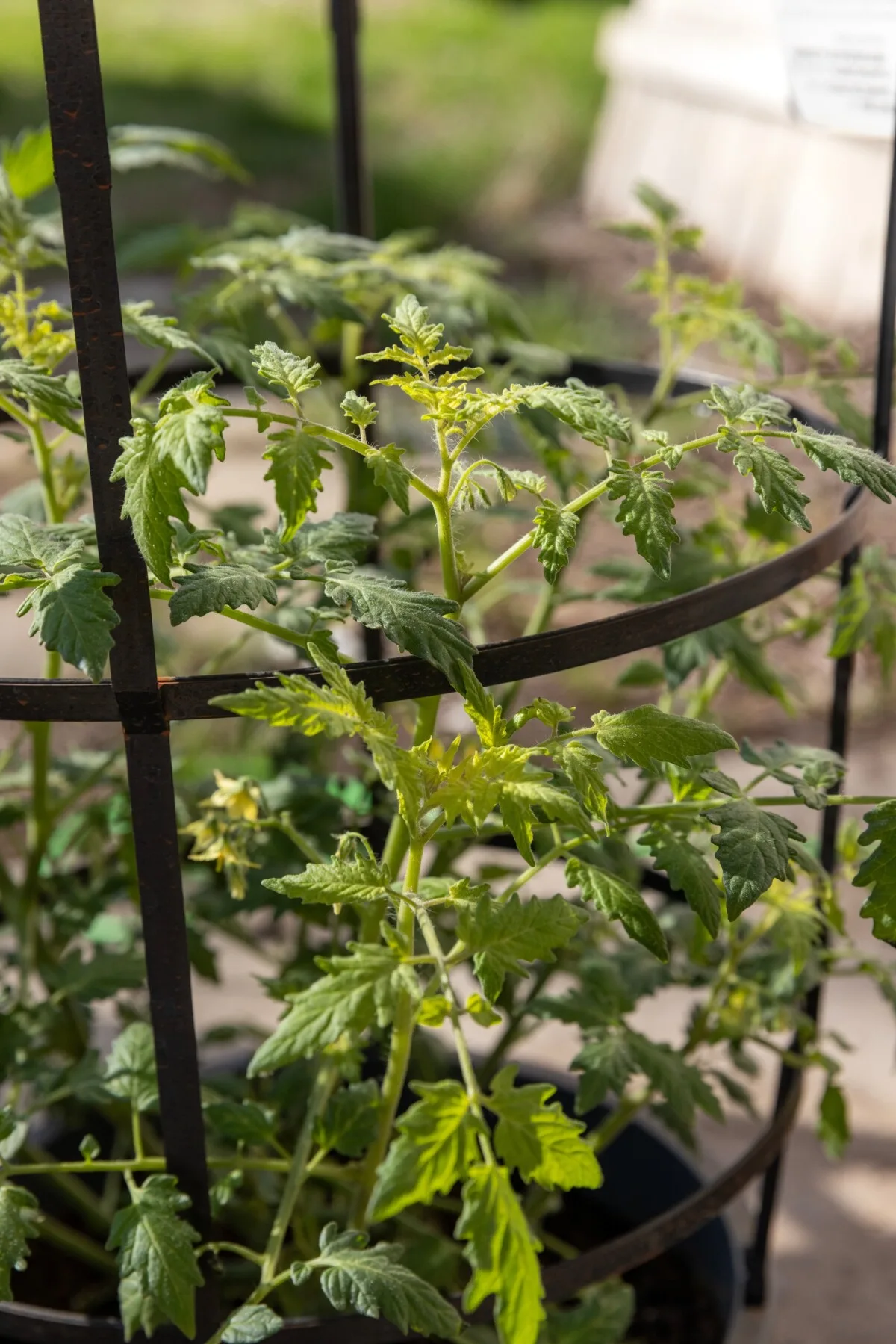
Mistake #4: Pots falling over
The tomato plants themselves aren’t the only thing at risk of falling over when growing in containers. The pots themselves can tip too.
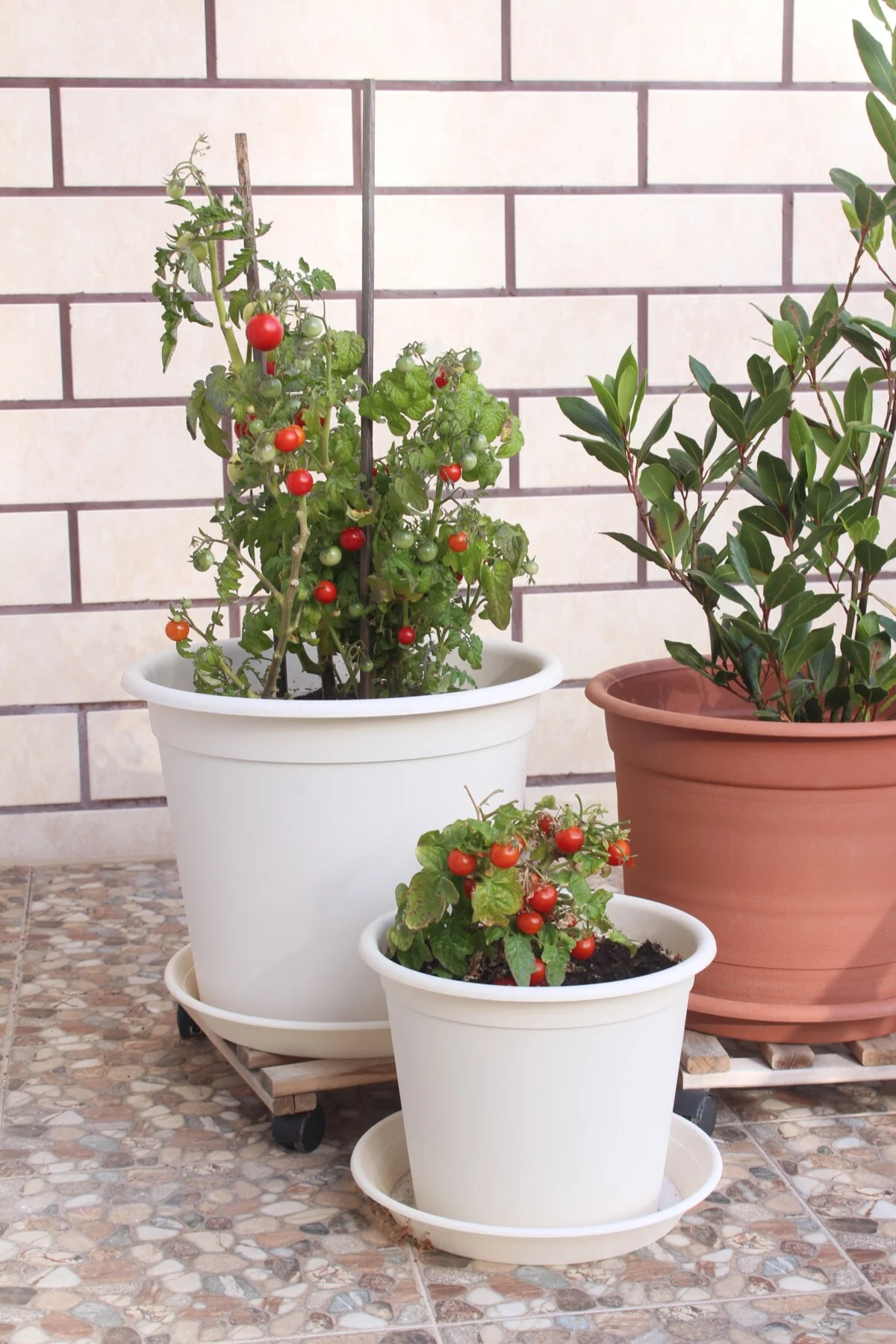
We had this happen twice when growing tomatoes in containers for the first season. The first time the pots were tipped over by a bear who made his way onto our deck and tipped the pots over, as well as many other things we had outside.
The second time the pots were tipped over by strong winds.
Both of these times, we had a big mess on our hands, and our tomato plants suffered for our mistake. Their soil got dumped, roots were damaged, and stems were bent and broken. A few of the plants survived, and others didn’t.
This is an easy mistake to fix. We found that we could use bungee cords to secure the pots to the deck railings. If you don’t have railings in your outdoor growing space, you can brace the tomatoes with patio furniture when you’re expecting storms.
Mistake #5: Rushing to put them outdoors
I’ve made this mistake more times than I care to recount. I’m always so excited for spring after a long, cold winter that I pull all my houseplants outside on the first sunny warm day.
While many plants will adore you for this, tomatoes can wither and die in the blink of an eye.
Tomatoes can’t stand the cold and will easily die if they catch a frost. Many tender transplants can’t handle winds, heavy rains, and direct sunlight either.
Tomatoes are delicate, fragile little things. They need time to acclimate to life outside after living in a greenhouse or growing from seeds inside your toasty warm home.
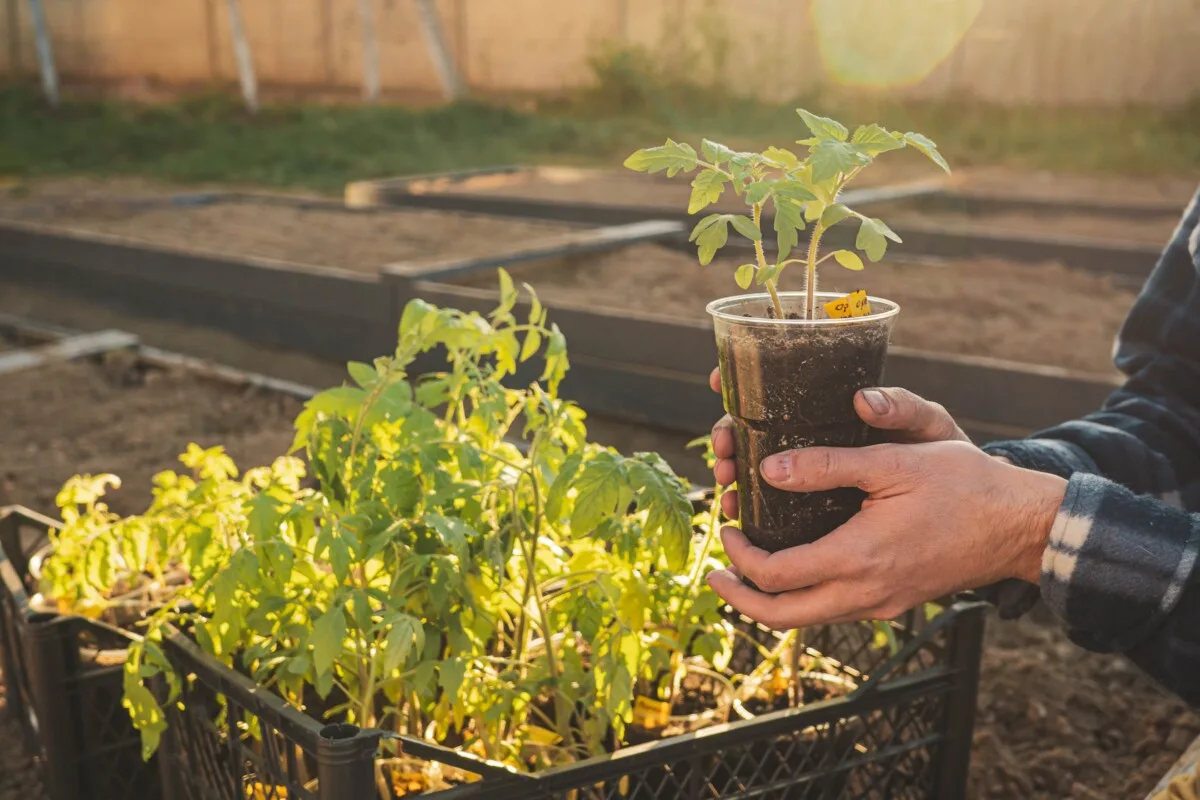
After your tomatoes have properly acclimated, you can plant them in their big 5-gallon pots and leave them out permanently. Be sure you’re well past your last frost day and nighttime temperatures are above 50 degrees.
Rural Sprout editor, Tracey, has a great article on hardening off seedlings before transplanting outside here.
Mistake #6: Growing the wrong type of tomato in pots
Tomatoes come in a huge variety of shapes, sizes, and colors. That’s not just the fruit; the plants come in different sizes too!
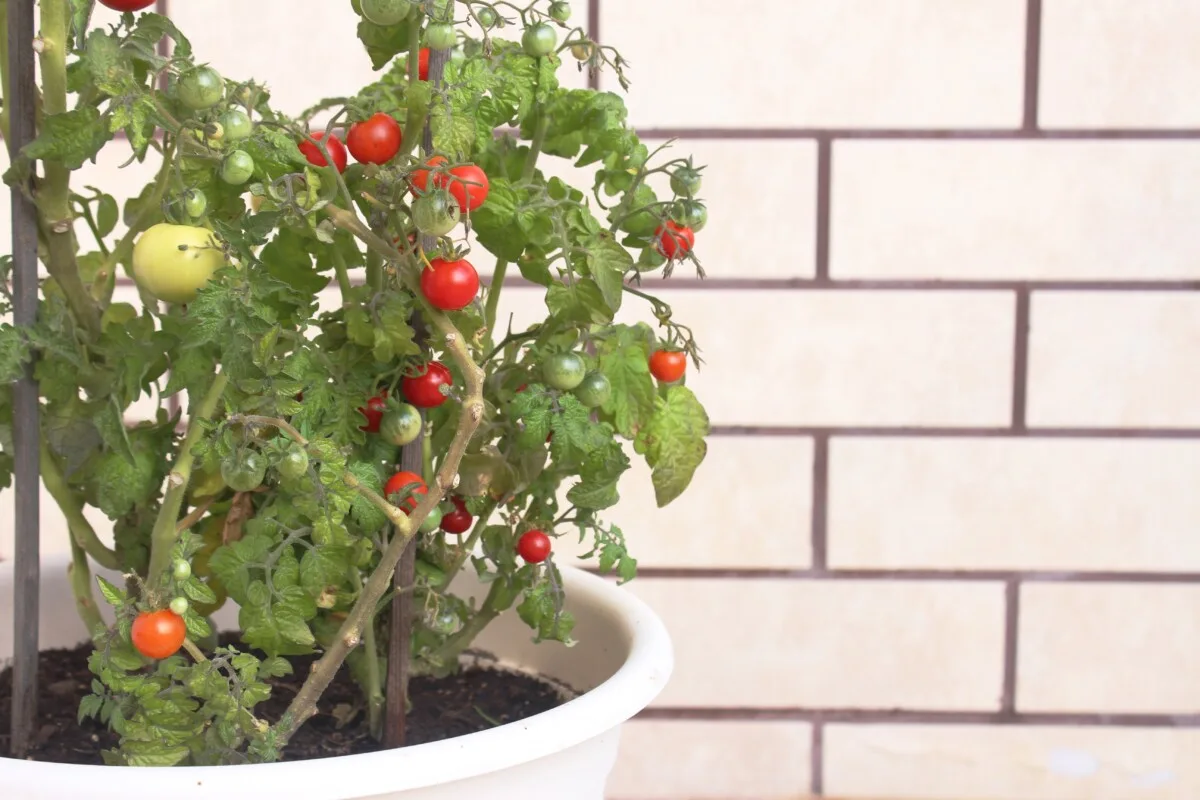
Some tomato plants get to a certain height and then stop growing; these are called determinate tomatoes. This is the variety that does the best in pots; they stay short and stocky. Because of that, they’re not likely to outgrow their pots or tip over.
Try to stay away from indeterminate varieties of tomatoes when growing in containers.
These tomatoes just grow and grow, basically until either the growing season ends or they get too tall and tip over, but some even keep growing along the ground!
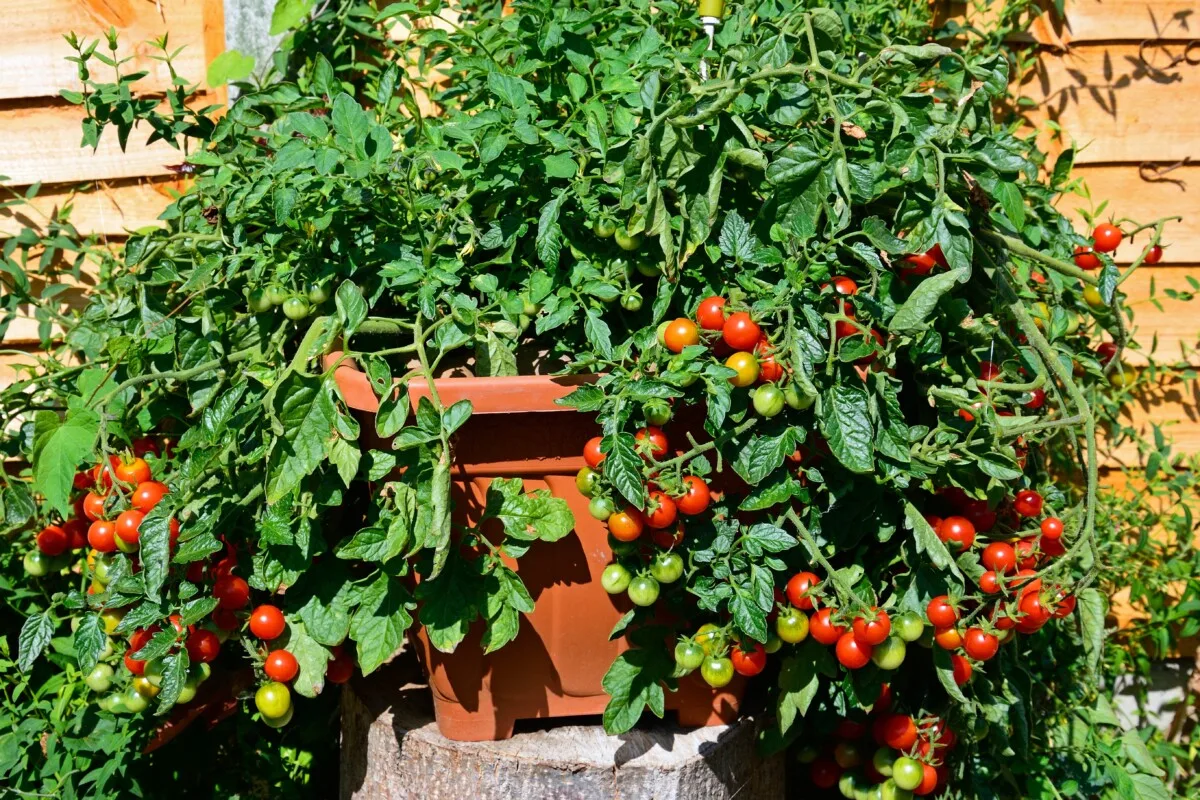
If you want to grow indeterminate tomatoes, make sure you ‘top’ the plants by cutting the tops off once they get to a reasonable height. This will discourage them from growing up and encourage them to instead grow out and get more bushy.
Mistake #7: Not amending the soil
All-purpose potting soil isn’t good enough for most houseplants, and it’s not good enough to grow tomatoes, either. Tomatoes are heavy feeders; they need a lot of nutrients like nitrogen, phosphorous, and potassium to grow big and strong.
It’s a huge mistake to just put your tomatoes in a pot of soil and leave them for the season.
Fertilizer or compost is a must when growing tomatoes in pots. I like to mix compost into my potting soil when I plant the seedlings at the beginning of the growing season. Then each month, I ‘side dress’ my tomatoes by putting a ring of compost around the stem. I also use foliar fertilizer spray that’s specifically for tomatoes.
Mistake #8: Forgetting to keep an eye out for pests
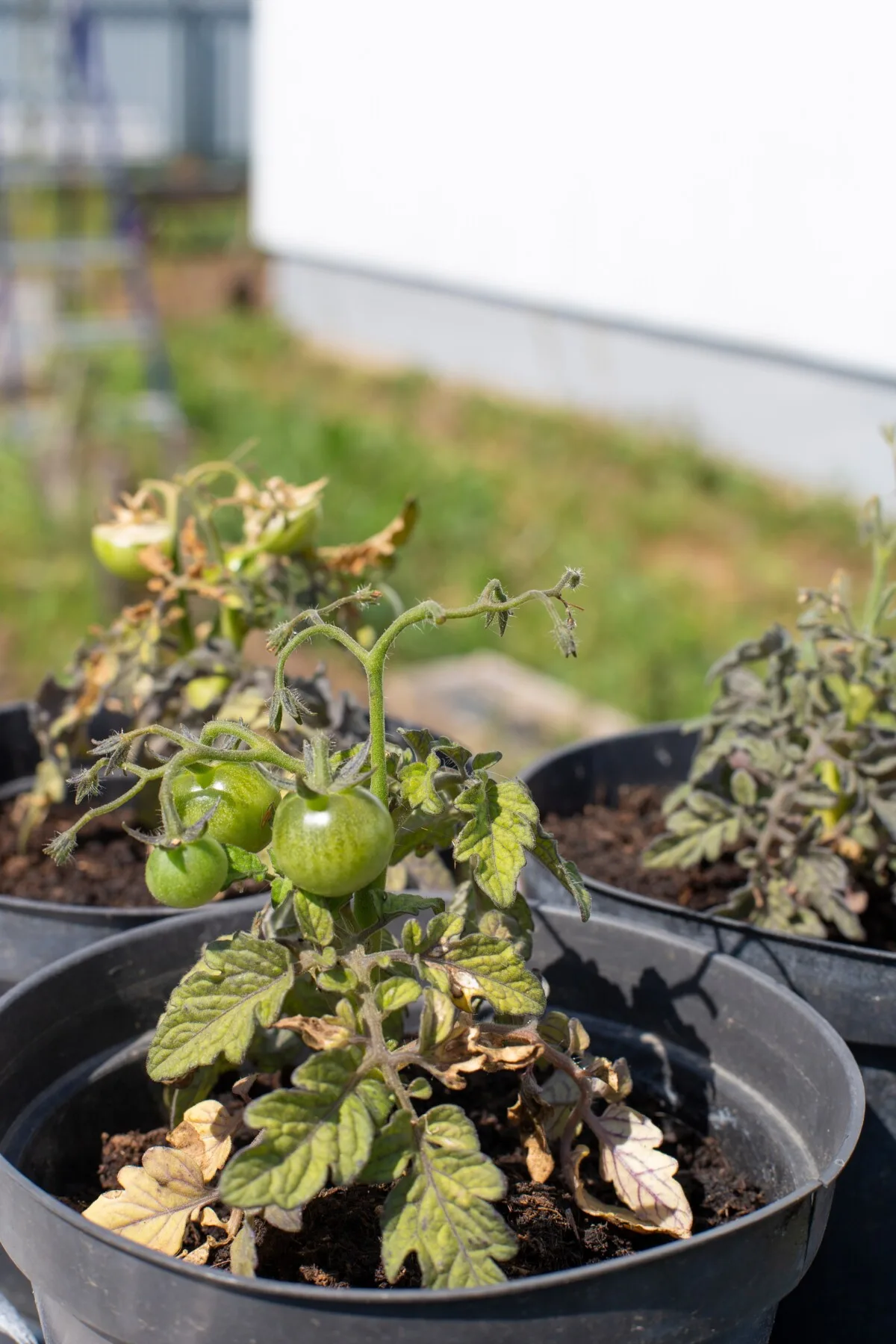
The first year we grew tomatoes in containers on our deck, I naively thought we didn’t need to worry about pests. Pests usually come from the soil, and since my tomatoes weren’t growing in the ground, I thought I didn’t need to worry about pests.
I was further comforted by the fact that we were using brand-new, sterile potting soil that should be free of pests.
Then the tomato hornworms struck, and they struck hard. We kept our tomatoes on a part of our deck that we don’t frequent, so I didn’t notice that we had a problem until it was far too late.
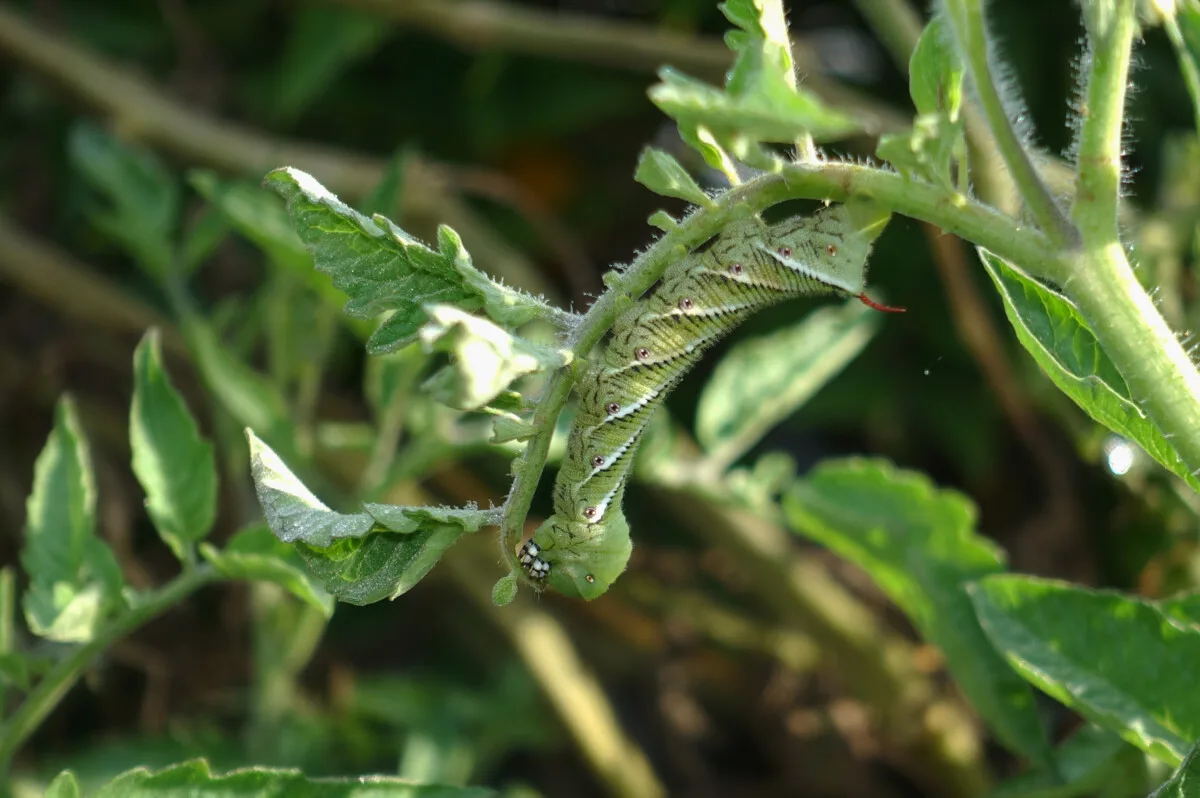
The hornworms had eaten the entirety of three plants before I even realized we had them.
We were able to save a few of our plants from further devastation by relocating the worms, but the damage had already been done to those plants that got eaten.
Related Reading: Hunting Tomato Hornworms With a UV Flashlight
All this to say, keep a close eye on your potted tomatoes. They can still get hit hard with pests even if they’re nowhere near the ground. Most pests can be thwarted if you catch them early enough.
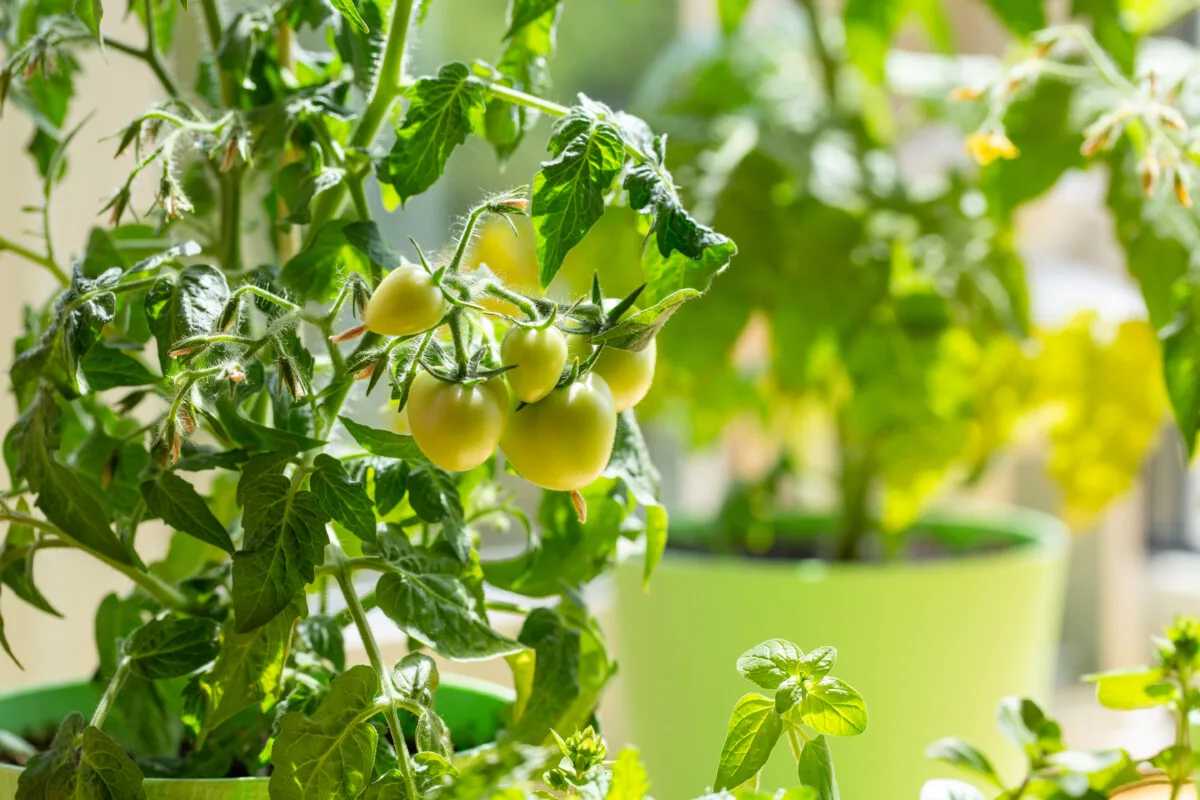
Growing tomatoes in containers is indeed much different from growing them in the ground, but equally rewarding. If you don’t have the best soil or sun in your yard, or perhaps you don’t have yard space for a garden, growing in pots is a wonderful option. Just make sure you work to avoid these mistakes so you have plenty of beautiful tomatoes to add to your salads, soups, and sandwiches this year!

Get the famous Rural Sprout newsletter delivered to your inbox.
Including Sunday musings from our editor, Tracey, as well as “What’s Up Wednesday” our roundup of what’s in season and new article updates and alerts.

